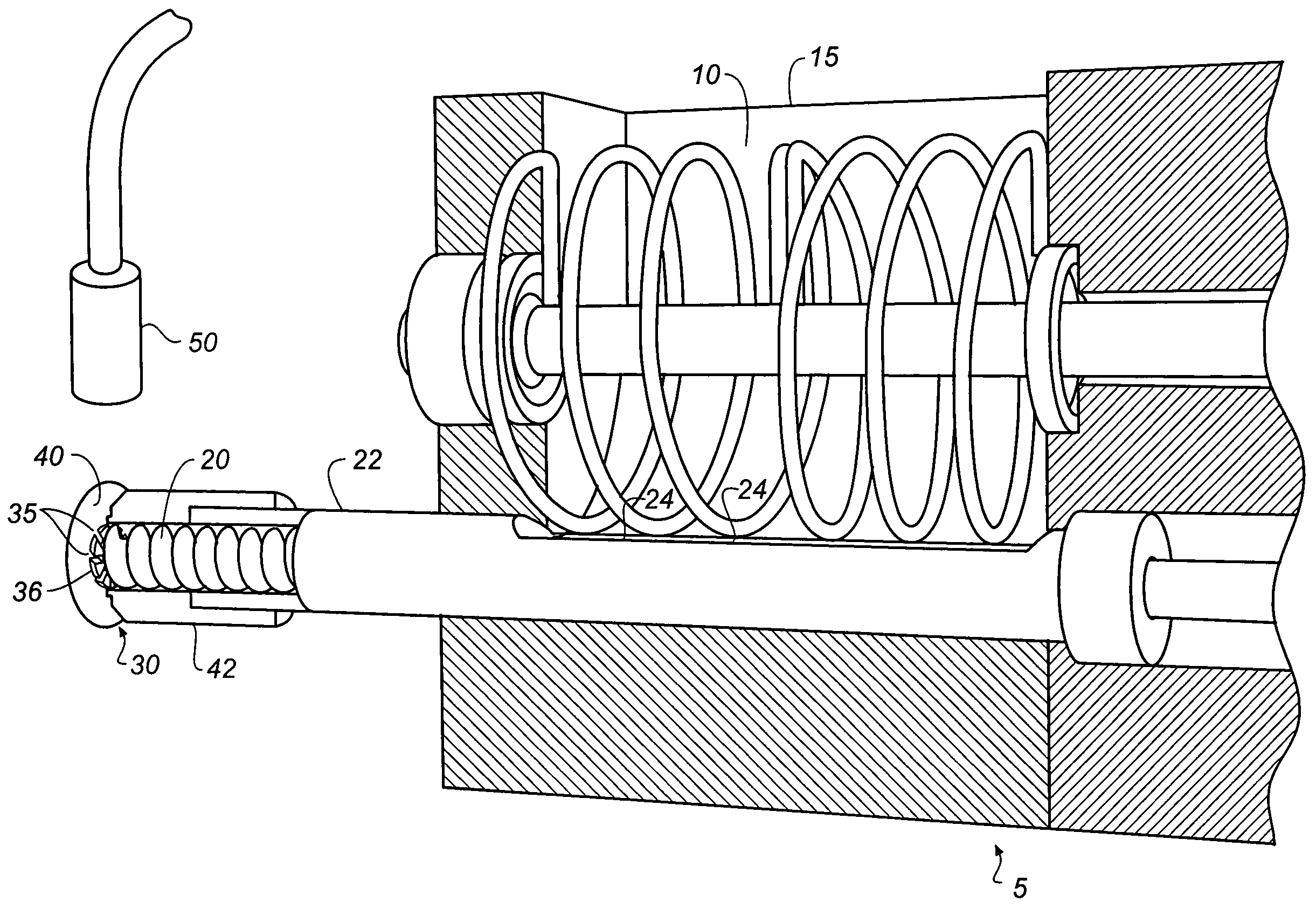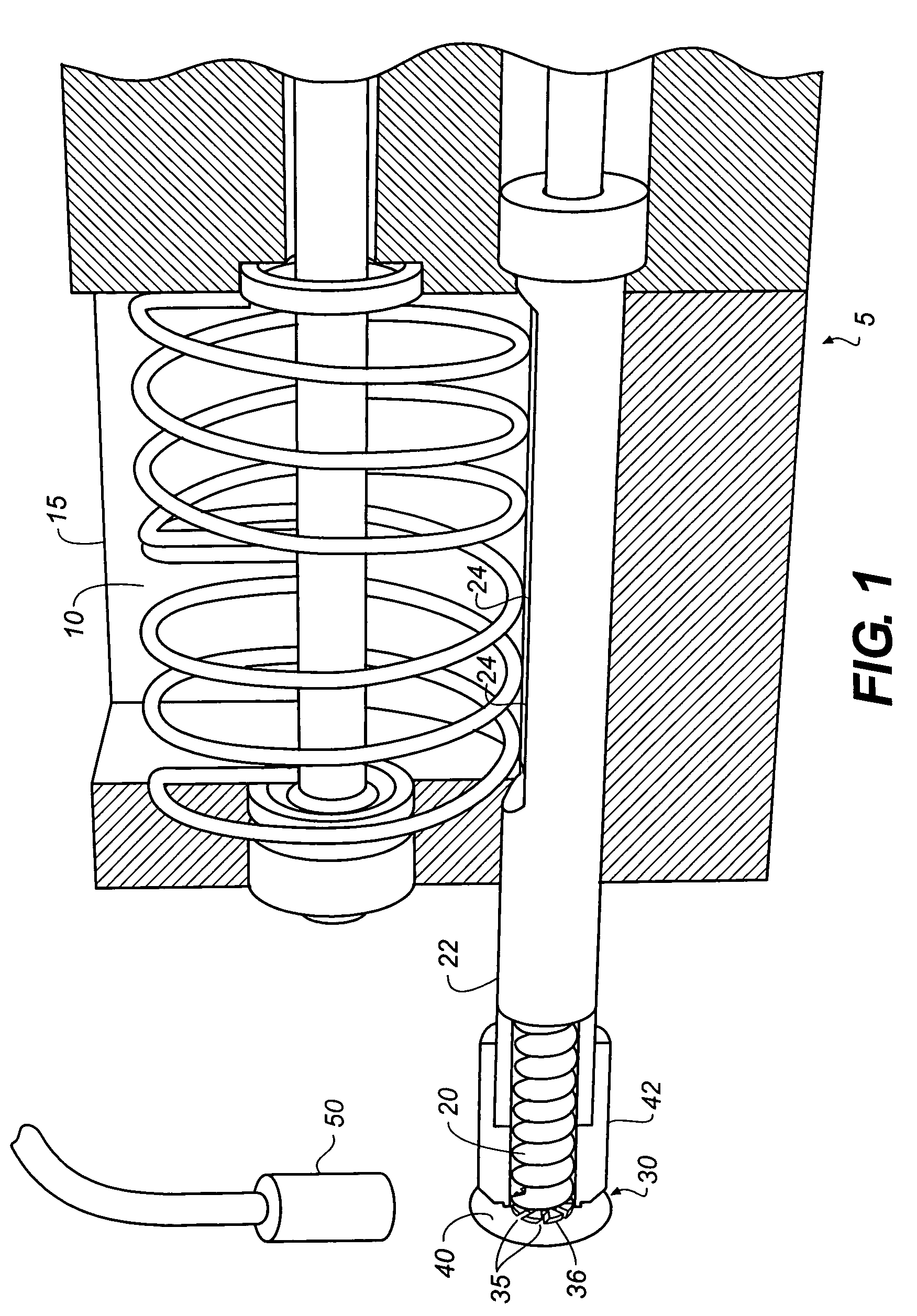Controllably feeding powdered or granular material
a technology of granular material and powder, which is applied in the direction of vacuum evaporation coating, chemical vapor deposition coating, coating, etc., can solve the problems of significant degradation, changes in the structure of the molecules and associated changes in the material properties, and the use of organic materials in the manufacture of oled devices are often subject to degradation, so as to facilitate the flow of powdered, reduce power consumption, and improve the effect of feed uniformity
- Summary
- Abstract
- Description
- Claims
- Application Information
AI Technical Summary
Benefits of technology
Problems solved by technology
Method used
Image
Examples
Embodiment Construction
[0021]Turning now to FIG. 1, an apparatus 5 for metering powdered or granular material 10 such as organic material into a heated surface 40 is shown. The apparatus 5 is includes a container 15 which holds material 10. Material 10 can have one or more components and can be powdered or granular. A rotatable auger 20 is disposed in an auger enclosure 22 which in turn is disposed in a material receiving relationship with the container 15. The auger enclosure 22 has openings 24 for receiving material 10 from the container 5. The rotatable auger 20 moves material 10 along a feed path 25 to a feeding location 30. Rotation of the rotatable auger 20 causes the material 10 to be subject to pressure at the feeding location 30. This pressure forces the material 10 through one or more openings 35 formed in a member 36. Member, 36 can be attached to the rotatable auger 20 so that the member 36 rotates with the rotatable auger 20, and carries material 10 into contact with a heated surface 40 where...
PUM
| Property | Measurement | Unit |
|---|---|---|
| particle size | aaaaa | aaaaa |
| thermally conductive | aaaaa | aaaaa |
| pressure | aaaaa | aaaaa |
Abstract
Description
Claims
Application Information
 Login to view more
Login to view more - R&D Engineer
- R&D Manager
- IP Professional
- Industry Leading Data Capabilities
- Powerful AI technology
- Patent DNA Extraction
Browse by: Latest US Patents, China's latest patents, Technical Efficacy Thesaurus, Application Domain, Technology Topic.
© 2024 PatSnap. All rights reserved.Legal|Privacy policy|Modern Slavery Act Transparency Statement|Sitemap



